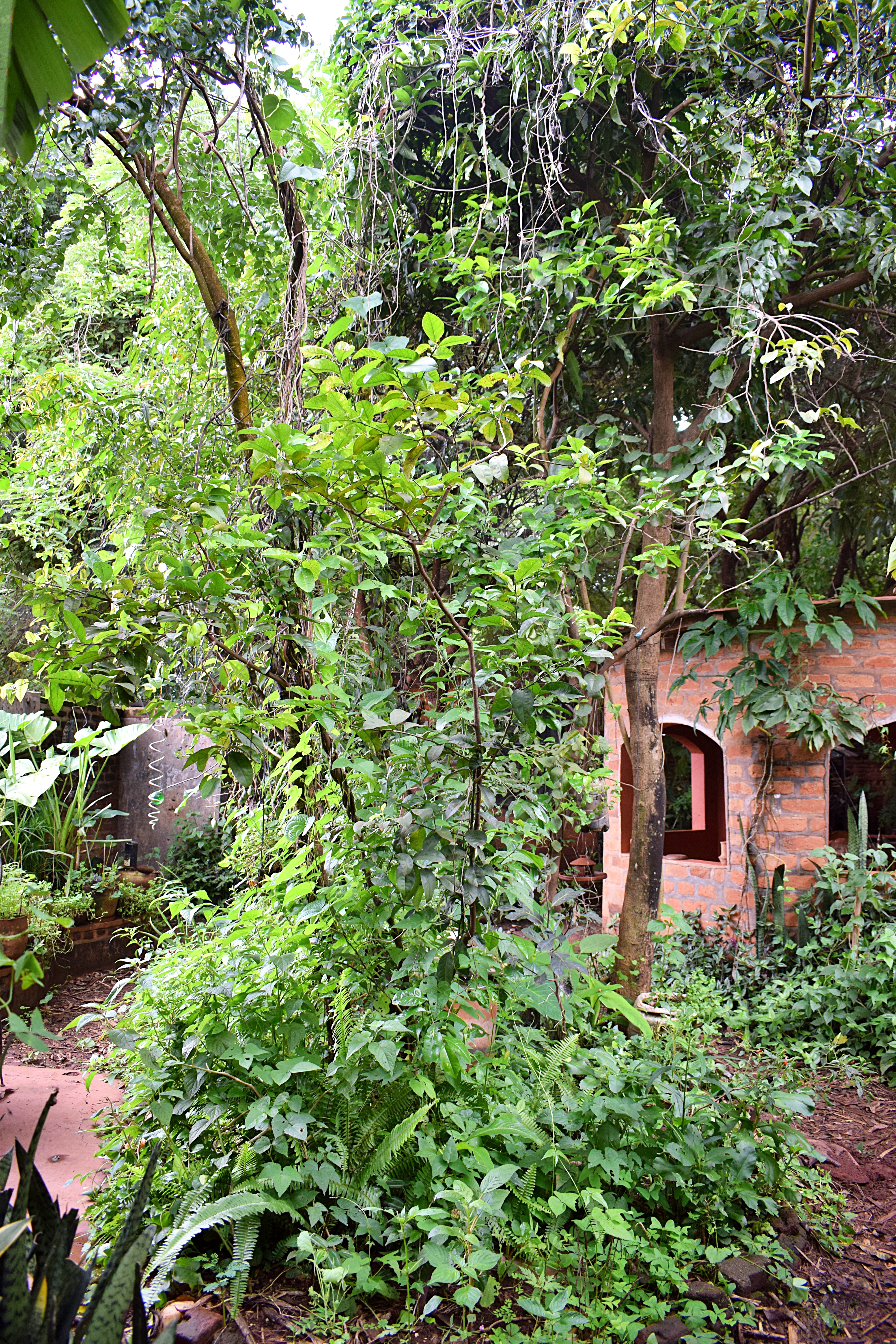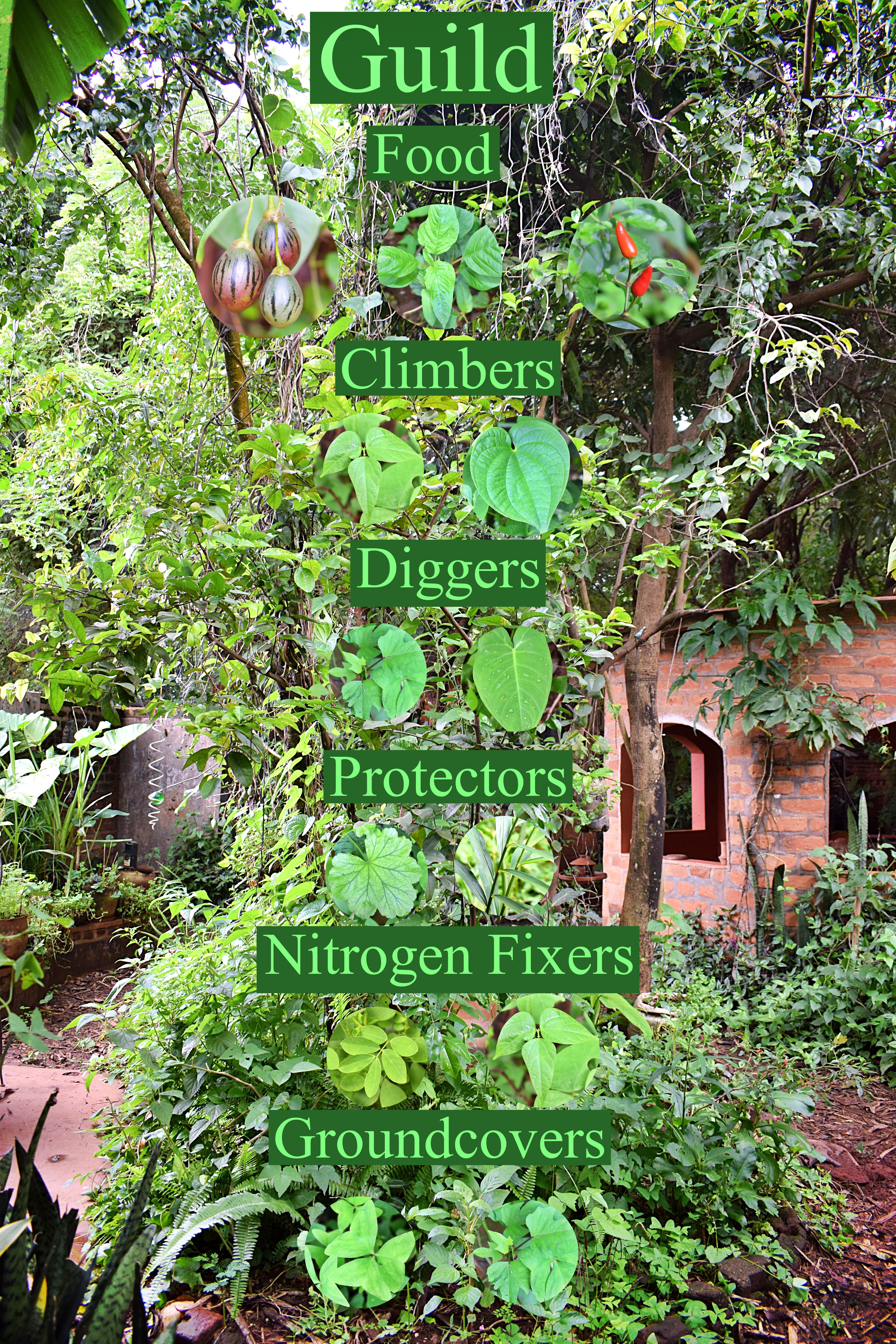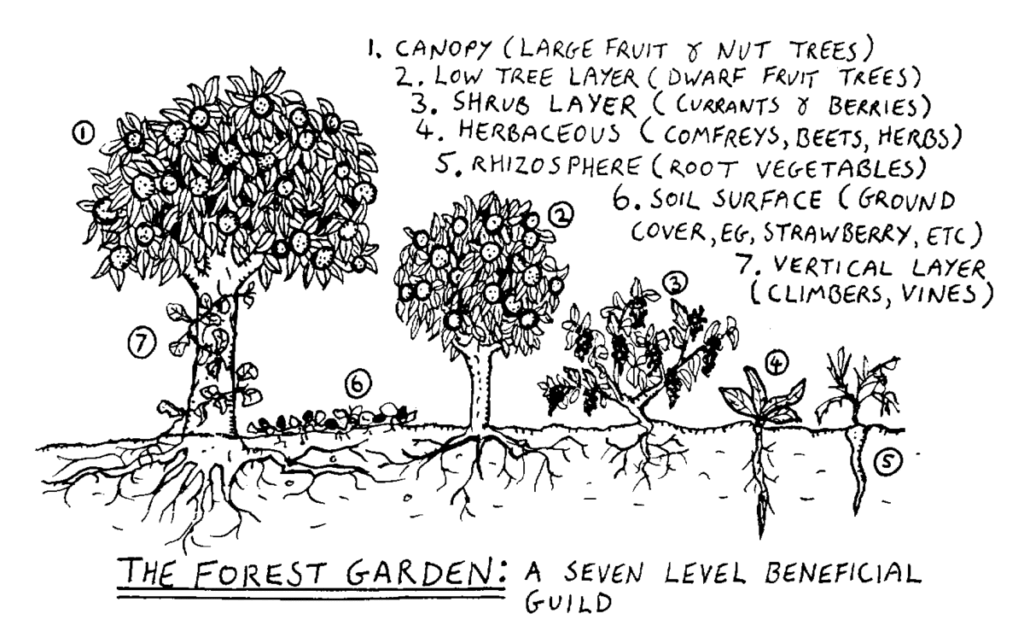
A ‘guild’ is generally defined as an association of people who work together towards a common goal. In Permaculture, a guild is considered to be an association of living organisms which also strive towards a common goal. When Bill Mollison was first developing the concept of Permaculture, he spent a great deal of time studying forest systems. He tried to understand what makes these ecosystems so highly productive, on their own, without the need for human intervention.
According to the Permaculture Research Institute in Australia:
- Forests are home to approximately 50-90% of all the world’s terrestrial (land-living) biodiversity — including the pollinators and wild relatives of many agricultural crops (Source: WWF Living Planet Report 2010)
- Tropical forests alone are estimated to contain between 10-50 million species – over 50% of species on the planet.
- Rainforests cover 2% of the Earth’s surface and 6% of its land mass, yet they are home to over half of the world’s plant and animal species.
Taking a lesson from nature, Mollison gradually developed the concept of a Permaculture Guild. He realized that despite the seemingly chaotic state of a forest, they are actually harmonious webs of interconnected functions. When we understand how these functions work, we can apply the lessons to the design of our own sustainable systems of living.
By thinking in terms of ‘functions’ rather than species, it helps to make the concept of Permaculture guilds a tool which can be applied to any situation in just about any place on earth. A good guild should contain food for people, climbers & supporters, diggers & miners, protectors & attractors, things that feed the soil, and groundcovers.

The job of a good Permaculture Designer is to choose the best resource to serve a specific function for the considerations of each unique site. For instance, in the picture above, we have used nitrogen-fixers to feed the soil. In this guild, we have leguminous plants such as local lima beans (Phaseolus lunatus), wild cassia (Senna singueana), and River tamarind (Leucaena leucocephala). These are all great species for this guild, but may not be right for other guilds on our site. Fortunately, nature has blessed the world with an abundance of nitrogen-fixers. We also feed the soil through the return of organic matter, compost, mulching, worm castings, eco-san compost, liquid manure, etc. These are all parts of a successful guild.
This guild is only about 4 meters long by two meters wide, but at last count it contains over 25 foods. Many of these foods help to serve various functions, such as a ginger plant, which has strong smelling leaves which act as a ‘protector’ and tubers that act as ‘diggers’. The flowers of various food plants go to seed throughout the seasons and serve to ‘attract’ beneficial organisms (e.g. ladybugs, spiders, birds, lacewings, etc.)
Robert Hart, a pioneer of ‘forest gardening’ in the UK and author of many books on the topic, identified seven layers of a natural forest:
- A ‘canopy’ layer consisting of the original mature fruit trees.
- A ‘low-tree’ layer of smaller nut and fruit trees on dwarfing root stocks.
- A ‘shrub layer’ of fruit bushes such as currants and berries.
- A ‘herbaceous layer’ of perennial vegetables and herbs.
- A ‘ground cover’ layer of edible plants that spread horizontally.
- A ‘rhizosphere’ or ‘underground’ dimension of plants grown for their roots and tubers.
- A ‘vertical’ layer of vines and climbers.

A Permaculture Guild tries to build these layers into its design. In the guild featured in the photos, our mango tree serves as the ‘canopy’; peaches, lemons, and monkey oranges are the ‘low-tree’ layer; tree-tomatoes, cape gooseberries, and peppers are the ‘shrub’ layer; various leafy green vegetables make up the ‘herbaceous layer’; sweet potato vines, strawberries, and oxalis are ‘groundcovers’; coco yams, ginger, and yams are the ‘rhizosphere’; and beans, air potatoes, and yam vines make up the ‘vertical’ layer.
This guild is situated in ‘zone one‘ and offers us highly-nutritious foods throughout the entire year. When we learn the lessons of nature we find that these solutions are no further than a step outside the door. As Bill Mollison once said, “The solutions are embarrassingly simple.”
For more information on guilds, visit our page: Permaculture Guilds. You can even download a free handout to help teach about guilds from the link below:
All donations go directly towards helping to spread Permaculture solutions throughout Malawi. Every little bit helps, and even a little can go a long way!
